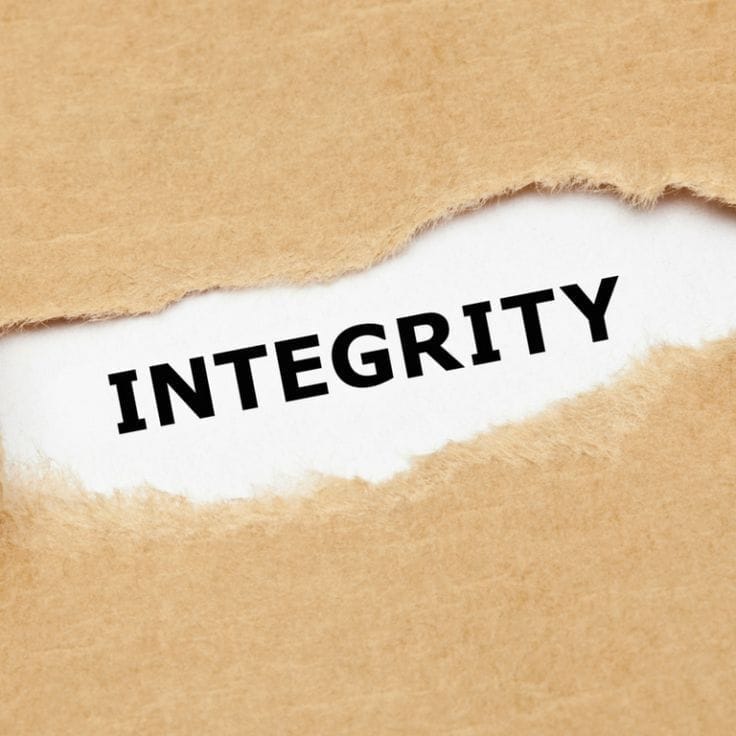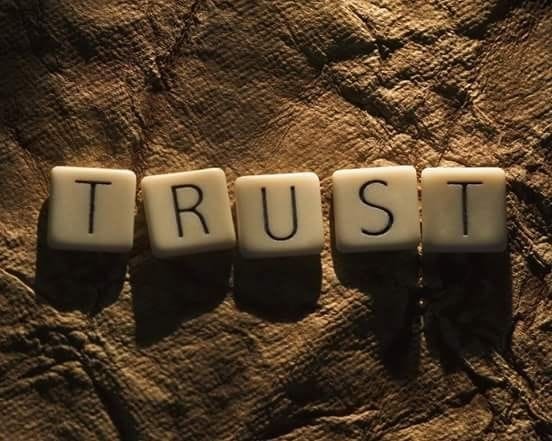LPA BLOG POST
10 DAILY LEADERSHIP HABITS FOR PRODUCTIVITY

Leadpreneur Academy

Leadpreneur Academy
Beyond the Bottom Line: 10 Daily Leadership Habits for Societal Impact and Unprecedented Productivity
Introduction: The New Paradigm of Impactful Leadership
In a world grappling with complex challenges, from climate change to social inequality, the traditional definition of leadership—focused solely on profit and efficiency—feels increasingly incomplete. What if the very habits that drive personal and organizational productivity could also become catalysts for profound societal change? What if every decision, every interaction, and every moment of a leader's day could contribute to a legacy far greater than any quarterly report? 1
The truth is, impactful leadership isn't about grand, infrequent gestures; it's forged in the crucible of daily routines and intentional choices. This report delves into the powerful synergy between personal productivity and collective societal good, illustrating how the habits leaders cultivate each day can amplify their influence far beyond the boardroom. This exploration moves beyond mere efficiency to a purpose-driven productivity that creates meaningful societal impact.5
This report will explore 10 daily leadership habits that not only optimize output but also empower leaders to be a force for positive change in their organization and the wider community. From leading by example to fostering psychological safety, these habits redefine what it means to be a truly effective and impactful leader in the modern world.
Foundations of Purpose-Driven Productivity
Habit 1: Lead by Example – Inspiring a Ripple Effect of Integrity
Leading by example means consistently modeling the behaviors, work ethic, and ethical conduct desired in a team and organization.7 It involves "walking the walk" rather than just "talking the talk" 8, thereby setting a clear standard for performance and decorum.8 This foundational habit is crucial for building a cohesive and high-performing environment.
Leaders can model desired behaviors by scheduling meetings with clear agendas, running them effectively, and diligently following up on action items. This sets precise expectations for time management and organization within the team.8 By demonstrating efficiency and a strong work ethic, leaders naturally inspire others to emulate these qualities.7 Authentic leadership requires consistency between words and actions. Leaders should avoid hypocrisy; they should not ask employees to do what they are unwilling to do themselves.7 For instance, if advocating for work-life balance, a leader should genuinely utilize their own paid time off (PTO) and take regular breaks, thereby normalizing these practices for their team.8 Furthermore, being genuine and transparent, even admitting when one does not have all the answers, builds profound trust and encourages open dialogue within the team.9 This authenticity inspires team members to be their true selves, fostering a culture of openness and honesty.10
Leading by example directly cultivates respect and trust between leaders and their employees.10 This trust is a fundamental cornerstone for effective collaboration and loyalty within any organization.10 When trust is established, teams are more engaged and productive. When leaders consistently act with integrity, transparency, and empathy, they foster a culture of trust and respect that extends beyond the immediate organizational boundaries.12 This creates a "ripple effect" where employees are inspired to adopt similar behaviors, leading to a more positive and ethical environment.5 Ethical leaders who champion ethical practices within their organizations also encourage external stakeholders, such as customers and suppliers, to adhere to similar standards. This widespread adoption of ethical conduct contributes to increased trust and reduced corruption in society at large.12 Thus, a leader's daily commitment to integrity is not merely beneficial for business; it serves as a foundational building block for a more ethical and accountable society.
The pervasive influence of daily actions means that leadership is fundamentally a performative act. Consistent behavior, rather than just spoken words, shapes the collective consciousness and behavioral norms of an organization and community. Employees and community members internalize these norms through observation, leading to widespread adoption of practices. Therefore, every daily habit of a leader, no matter how seemingly small—such as taking a lunch break, being punctual, or handling conflict with grace—has an amplified, exponential impact on the collective behavior and well-being of the team and, by extension, the community.5 This transforms seemingly minor personal habits into powerful tools for widespread cultural and societal change, emphasizing that leadership is lived in the everyday, not just in crisis moments.
Habit 2: Strategic Prioritization – Directing Energy Towards Meaningful Change
Highly productive leaders ruthlessly prioritize and utilize time blocking to concentrate on high-impact tasks, avoiding getting lost in the overwhelming flow of daily operations.14 This systematic approach ensures that energy and resources are directed towards the most critical objectives.
Leaders can adopt a "two-list system," a method popularized by Warren Buffett: identify the top 25 business goals, circle the five most important, and then commit to focusing solely on those five, allowing the remaining 20 to wait.14 For non-profit leaders, this translates to consistently reconnecting with the fundamental "why" behind their organization's mission, ensuring every effort aligns with its core purpose.16 Moving beyond overwhelming to-do lists, effective leaders schedule specific, protected blocks of time for critical tasks, including strategic planning and key priorities.14 This proactive scheduling prevents "decision fatigue" in the morning, allowing leaders to immediately engage with high-priority work.8 When time is intentionally blocked, it ensures that everything actually gets done within reasonable hours.14 Inspired by the productivity tip "eat that frog," leaders tackle their most challenging or important task first thing in the morning.8 This approach builds significant momentum, making the remainder of the day feel relatively easier and ensuring critical projects are addressed when energy and focus are highest.
Strategic prioritization is pivotal in ensuring that organizational resources and a leader's invaluable energy are channeled into initiatives with the greatest potential for positive community outcomes.16 For non-profits, this focused allocation is crucial for achieving their mission and making a tangible, measurable impact on the community.17 Strategic leaders possess a combination of visionary thinking and adaptability, enabling them to navigate rapidly changing environments effectively. This foresight ensures that the organization remains relevant and competitive in addressing evolving societal needs and challenges.20 Strategic leadership extends beyond short-term gains, focusing on a long-term vision and overall organizational direction that integrates both financial and social performance.20 This means consciously aligning organizational objectives with broader societal needs, thereby contributing to a more sustainable and equitable future.
The distinction between traditional productivity and strategic prioritization is profound. While traditional approaches often focus on "doing more" or "doing things right," emphasizing volume or correctness 7, strategic prioritization shifts the emphasis to "doing the right things" 7 and focusing on "what matters most".15 For social impact, this is critical. It is not just about completing tasks efficiently, but about ensuring those tasks contribute directly to the desired societal vision.16 This involves a conscious decision to de-prioritize or eliminate activities that do not align with the core mission.16 Therefore, strategic prioritization in a leadership context becomes a moral and ethical imperative. It ensures that limited resources—time, energy, and budget—are intentionally directed towards maximizing positive societal impact, rather than being diffused by distractions or less impactful activities.16 This elevates productivity from a personal benefit to a strategic tool for social change, making leaders accountable for the direction of their efforts, not just the volume.
| Category | Traditional To-Do List | Strategic Time Blocking for Impact |
|---|---|---|
| Primary Focus | Task Completion | Outcome Achievement, Mission Alignment |
| Approach | Reactive, List-driven | Proactive, Calendar-driven |
| Key Challenge | Overwhelm, Parkinson's Law | Balancing urgent vs. important |
| Productivity Benefit | Gets things done, but not necessarily the most important things | Ensures important things get done, reduces decision fatigue, builds momentum |
| Societal Impact Benefit | Incidental; impact is a byproduct of completed tasks | Direct resource channeling to high-impact initiatives, aligns daily work with long-term social goals |
| Example | Checking off emails as they arrive throughout the day | Dedicated "strategic thinking time" block in the morning to plan community outreach |
Cultivating Growth and Connection
Habit 3: Embrace Continuous Learning – Fueling Innovation for a Better World
Effective leaders are perpetual learners, consistently seeking to enhance their skills and knowledge.8 This unwavering commitment to lifelong learning is paramount for fostering adaptability and remaining relevant in today's rapidly evolving global landscape.
Leaders can seamlessly integrate learning into their daily routines. This might involve listening to educational podcasts during commutes, watching online courses during lunch breaks, or dedicating a focused 15-30 minutes at work specifically for reading relevant materials.8 Continuous learning extends far beyond traditional academic degrees or certifications; it is about actively seeking opportunities for personal and professional growth, exploring novel ideas, and challenging the prevailing status quo.24 This encompasses participating in workshops, attending webinars, engaging in professional networking, and seeking mentorship opportunities.23 Leaders should not only model continuous learning but also actively encourage and facilitate it within their teams. This can involve initiating regular "learning sessions" where team members share insights from recent courses or books, discuss industry trends, or collaboratively solve problems.23 A crucial aspect is to accept mistakes as valuable opportunities for reflection and learning, fostering an environment where growth is prioritized over perfection.
Continuous learning equips leaders with the diverse knowledge and adaptable skills necessary to develop creative and effective solutions for complex social issues.26 Organizations that cultivate a culture of continuous learning are inherently better prepared to meet evolving challenges and drive innovation, which is essential for societal progress.25 Leaders who embrace a growth mindset are better positioned to understand the intricate dynamics of complex social systems and human behavior. This deep understanding is indispensable for leading impactful social change, enabling them to design and implement interventions that genuinely meet community needs.27 The practice of continuous learning significantly strengthens resilience. It provides leaders and their teams with the skills and knowledge to navigate challenges, embrace new opportunities, and recover effectively from setbacks.24 This collective adaptability directly contributes to the overall resilience and stability of society.
The individual act of continuous learning directly feeds into the collective capacity for social innovation. Leaders who constantly learn acquire the diverse knowledge, frameworks, and skills needed to understand complex problems—such as human-centered design or systems thinking—and design effective interventions at a societal level.26 This process transforms abstract knowledge into actionable solutions, enabling leaders to address real-world challenges with greater efficacy. Therefore, a daily habit of personal learning is not a solitary pursuit but a fundamental investment in a leader's ability to contribute to social progress. It implies that the most effective social impact leaders are perpetual students of the world, constantly refining their approach to solve evolving community challenges and adapt to new social dynamics. This positions learning as a civic duty for impactful leaders, highlighting its role in shaping a better future.
Habit 4: Transparent Communication – Building Bridges of Trust and Understanding
Transparent communication involves the open sharing of both positive and challenging information, crucially including the "why" behind the words, across all organizational levels and with external stakeholders.31 It stands as a fundamental pillar for fostering trust and collaboration.
Leaders should cultivate habits such as rereading emails before sending them, providing team members with ample opportunities to ask questions, and actively listening to feedback.8 Delivering clear, concise information while avoiding jargon ensures messages are universally understood.34 It is vital to inform employees and stakeholders promptly upon acquiring new information.31 In the public sector, timely and comprehensive updates are essential to prevent the spread of misinformation and maintain public confidence, especially during crises.34 Actively seeking public input through town halls, surveys, and social media platforms, and then responding thoughtfully to concerns, demonstrates a commitment to responsiveness.34 Within teams, encouraging open dialogue and establishing clear feedback channels are equally important.37 When errors occur, leaders should address them transparently, take responsibility, and clearly outline corrective actions.35 This practice is crucial for building and maintaining credibility, fostering a culture of accountability rather than blame.
Transparent communication is indispensable for building trust in government and public institutions.34 It reassures citizens that their government operates with integrity and accountability, thereby strengthening public confidence.34 Well-informed citizens are significantly more likely to participate in public discussions, elections, and policymaking, which in turn strengthens democratic processes and civic life.34 Open access to information, including budget reports and policy decisions, promotes accountability and actively helps prevent corruption.33 Furthermore, it plays a critical role in mitigating the spread of misinformation during times of crisis, ensuring a more informed populace.
The consistent practice of transparent communication by a leader has far-reaching effects. Snippets consistently link transparency to building trust within organizations 31 and, crucially, within government and public sectors.34 This trust, built on open information and accountability, directly correlates with increased civic engagement, reduced corruption, and the ability to navigate crises effectively.34 When citizens understand the "why" behind decisions 31, they are more likely to support them and participate in collective efforts. Therefore, a leader's daily habit of transparent communication transcends mere organizational efficiency; it actively contributes to the health and functionality of democratic processes and the overall well-being of a community or society. It is a critical mechanism for ensuring that power serves the people, that resources are allocated fairly, and that decisions genuinely reflect collective needs, thereby strengthening the very foundation of governance and fostering a more informed and engaged citizenry.
Habit 5: Practice Empathy and Active Listening – Connecting for Deeper Societal Cohesion
Empathy is defined as the ability to understand and share the emotions, thoughts, and perspectives of others.43 Active listening is the indispensable skill that underpins empathy, demanding full presence, non-judgment, and a genuine understanding of both the speaker's verbal message and their underlying emotions.
To practice active listening, leaders must give their full attention, eliminate distractions, maintain consistent eye contact, and consciously resist the urge to formulate a response while the other person is speaking.45 This complete focus signals respect and engagement. Encourage deeper dialogue and richer insights by asking open-ended questions, such as "How is this affecting you?" instead of simple yes/no queries.47 This invites the speaker to elaborate and share more comprehensively. Paraphrasing what has been heard helps confirm understanding and acknowledges the speaker's feelings.46 Phrases like "It seems you felt frustrated when..." can validate emotions and build rapport.46 Regularly challenge oneself to view situations from the viewpoints of others, particularly those with different backgrounds, experiences, or cultural contexts.48 This exercise broadens understanding and reduces unconscious biases.
Empathetic leadership cultivates trust and fosters deeper connections within teams and broader communities.45 When individuals feel genuinely heard and understood, their willingness to collaborate effectively significantly increases.47 Empathy enables leaders to connect with diverse team members and appreciate their unique perspectives, fostering a truly inclusive environment.47 This is crucial for building a stronger society that embraces and leverages the strengths of people from varied backgrounds.12 Empathetic leaders are better equipped to address challenges before they escalate and to resolve conflicts by understanding the underlying root causes and emotions involved.50 This approach leads to more cohesive units and strengthens community bonds, promoting a sense of unity and shared purpose.
The consistent practice of empathy and active listening by a leader serves as a powerful catalyst for social cohesion and innovation. These internal team dynamics, where individuals feel understood and valued, directly mirror the needs of a healthy, functioning community. The ability to bridge cultural differences 51, address root causes of disputes, and foster collaborative problem-solving 47 is essential for societal progress. Real-world examples, such as Princess Diana's groundbreaking act of shaking hands with an AIDS patient, which profoundly changed public perceptions of the disease 53, or a non-profit transforming internal resistance into cooperation through empathy-building exercises 54, demonstrate this broader impact. Therefore, a leader's daily practice of empathy and active listening is not merely a "soft skill" for improving team morale; it is a critical habit for building social cohesion, fostering inclusivity, and driving collective innovation to address complex societal challenges. It suggests that emotional intelligence in leadership has a direct, measurable impact on the fabric and functionality of society at large, making communities more understanding, collaborative, and resilient.
Empowering Teams for Collective Impact
Habit 6: Empowering Delegation – Nurturing Leaders for Broader Community Impact
Delegation transcends mere task assignment; it is a strategic act of entrusting responsibility and authority to team members, enabling their growth and fostering meaningful contributions.55 Effective delegation is a hallmark of strong leadership, allowing leaders to focus on strategic priorities while developing their team's capabilities.
Leaders should strategically delegate operational responsibilities to free up their own time for higher-level, strategic work.56 It is crucial to match tasks to individual team members' strengths and, where appropriate, allow them to self-select projects they are interested in taking on.58 This approach enhances engagement and ensures tasks are handled by those best suited for them.56 When delegating, it is essential to clearly explain why the task is being assigned and how it contributes to the individual's growth and the broader objectives.58 Leaders must provide necessary resources, training, and ongoing support, adopting a coaching mindset rather than micromanaging.55 This support ensures success and builds confidence.55 Effective delegation involves fostering an environment where team members feel empowered to make decisions and take genuine ownership of their assigned tasks.58 Leaders should resist the urge to take back responsibility once it has been delegated, allowing the employee to complete the task and learn from the process, even if it takes more time.55
Empowering delegation directly cultivates leadership skills and expands leadership capacity within organizations and communities.56 It allows individuals to take ownership and prepares them for greater responsibilities in the future, creating a stronger leadership pipeline.56 By empowering frontline leaders and community members, delegation drives the development and implementation of local solutions to problems. For instance, in community policing, assigning officers to organize and lead community outreach meetings not only builds trust but also develops their leadership and project management skills.57 In school districts, delegating curriculum implementation or community engagement tasks develops leadership among principals and communication teams.56 Delegation significantly improves efficiency by ensuring tasks are handled by those best suited for them. Furthermore, it boosts morale and engagement among team members, leading to a stronger, more resilient organization that can achieve its goals more effectively.
The daily habit of empowering delegation is a powerful, scalable strategy for community development. While delegation is often discussed in terms of individual leader productivity and internal team development 55, it directly mirrors the principles of community-led development.62 By intentionally pushing decision-making and responsibility downwards within an organization—whether it's a non-profit, a school district, or a public service agency—leaders are not just managing tasks. Instead, they are cultivating a broader base of capable, engaged individuals who can drive change from within their own spheres of influence.56 This approach leads to more resilient, self-sufficient, and responsive communities that can address their own challenges more effectively, rather than relying solely on centralized authority. It suggests that the internal practice of delegation can have a profound external impact on community vitality and self-determination.
Habit 7: Foster Psychological Safety – A Safe Space for Bold Ideas and Collective Resilience
Psychological safety is the shared conviction among team members that they can take interpersonal risks, express themselves authentically, and voice opinions, ideas, or concerns without fear of judgment or negative consequences.63 It is a cornerstone of a thriving workplace culture.
Leaders set the tone for psychological safety by being open about their own challenges, uncertainties, and even admitting mistakes.38 This modeling creates a precedent, demonstrating that it is safe for others to be human and take risks without fear of retribution.66 Creating safe channels for anonymous feedback and conducting regular meetings where every individual is invited to speak freely fosters openness.38 Leaders must practice active listening and respond supportively to input, ensuring all voices are heard and valued.69 A critical shift in mindset is to view mistakes not as failures to be punished, but as valuable opportunities for learning and growth.66 Leaders should focus on understanding the root cause of an error and identifying how to prevent it in the future, rather than assigning blame.66 Actively recognizing and valuing diverse backgrounds and experiences is essential for building psychological safety. Leaders must ensure that all perspectives are heard and respected, regardless of hierarchy or background.
Psychological safety acts as a powerful catalyst for creativity and innovation by encouraging experimentation and open collaboration.64 This environment leads to the development of groundbreaking solutions for complex societal challenges, as diverse ideas are freely shared and built upon.63 In times of uncertainty or crisis, psychologically safe environments encourage transparent and open dialogue. This allows teams to express concerns, ask for help, and propose solutions, which effectively reduces misinformation and anxiety.67 This fosters emotional agility and strengthens team trust, making communities more resilient to unforeseen shocks and disruptions.67 High levels of psychological safety have been directly linked to fewer critical incidents in high-stakes fields, such as public safety, where effective communication under pressure is paramount.63 It also contributes to lower employee turnover rates and greater job satisfaction, fostering a healthier, more supportive workplace culture that ultimately benefits overall societal well-being.
The daily habit of fostering psychological safety by a leader is not just an HR best practice for team productivity; it is a vital component of public health and safety. Psychological safety significantly boosts team performance, creativity, and reduces errors by encouraging open communication and risk-taking.63 It is also linked to lower turnover and higher employee satisfaction.63 Crucially, existing evidence explicitly links high psychological safety to "fewer critical incidents in high-stakes fields, such as public safety".63 This demonstrates that the internal dynamics of a team directly impact external societal outcomes. Therefore, creating a safe space for dialogue in an organization can literally save lives or prevent widespread societal issues, contributing to the overall resilience and well-being of a community. It implies that a leader's commitment to psychological safety extends beyond the workplace, becoming a public good.
Sustaining Impact and Well-being
Habit 8: Cultivate Recognition and Gratitude – Fueling a Culture of Collective Contribution
Cultivating a culture of recognition and gratitude involves consistently acknowledging and appreciating the efforts and contributions of team members, both through formal programs and informal gestures.72 This practice is foundational for fostering a positive and engaged environment.
Simple expressions like a sincere "thank you" or a personalized written note can have a profound impact, making individuals feel valued and seen.72 These small gestures contribute significantly to morale. Leaders should give credit where it is due, utilizing team meetings, internal communication channels, or formal recognition programs to publicly acknowledge achievements.72 This fosters a sense of pride and accomplishment. Encouraging employees to recognize and thank each other builds stronger bonds and fosters a supportive, collaborative environment.73 Platforms like Google's gThanks program exemplify this.75 Acknowledging progress, no matter how minor, reinforces the importance of effort and boosts overall morale.16 This consistent positive reinforcement motivates continued contribution.
When employees feel genuinely valued, they become more engaged, motivated, and loyal to their organizations, which directly translates into increased productivity and efficiency.72 Studies indicate that recognized employees are significantly more engaged.75 Recognition programs foster a profound sense of belonging and connection, not only within workplaces but also within broader communities.73 This strengthens social capital—the networks and relationships that underpin community well-being.78 Recognizing volunteers not only demonstrates appreciation for their efforts but also actively encourages others to get involved in community activities, creating a positive feedback loop of engagement.
Companies that integrate volunteer opportunities often attract talent who are specifically seeking to make a social impact through their careers.
The daily habit of cultivating recognition and gratitude is a powerful mechanism for building and reinforcing community social capital. While workplace recognition primarily boosts individual motivation, engagement, and retention 72 and fosters a sense of belonging within the organization 73, its principles extend directly to volunteerism and broader community engagement.74 When individuals—whether employees or volunteers—are recognized for their efforts, it motivates them to contribute more, thereby building "social capital"—the networks and relationships that strengthen a community.78 This suggests that by consistently valuing contributions, leaders can inspire a broader culture of civic participation and collective action. This leads to more resilient and engaged communities, where people are more willing to go above and beyond for the collective good.73 Thus, gratitude in leadership is not just an internal HR strategy; it is a fundamental driver of community vitality.
| Recognition Method | Impact on Individual/Team Productivity | Impact on Societal/Community Engagement | Source/Example |
|---|---|---|---|
| Verbal Praise | Increased motivation, engagement, efficiency | Indirectly positive via motivated employees | Gallup Research |
| Written Notes | Boosts morale, job satisfaction | Indirectly positive via motivated employees | 72 |
| Public Recognition | Fosters accountability, high performance | Builds community pride, encourages volunteerism | |
| Peer-to-Peer Recognition | Improves teamwork, collaboration | Fosters supportive community environment | Google's gThanks |
| Volunteer Programs | Enhances job satisfaction, pride, purpose | Direct community impact, attracts talent seeking social impact | 79 |
Habit 9: Prioritize Well-being and Self-Care – The Ripple Effect on Community Health
Leaders who consciously prioritize their own physical, mental, and emotional well-being are inherently more focused, emotionally intelligent, and capable of making superior decisions.81 Self-care is not a luxury or indulgence; it is a fundamental professional necessity for sustained effectiveness.81
Leaders should actively model self-care by utilizing their allotted paid time off (PTO), taking regular lunch breaks, incorporating short walks throughout the day, and consciously avoiding taking work home.8 It is crucial to genuinely unplug and take real vacations to demonstrate the importance of rest.13 Setting clear and firm boundaries between work and personal time is essential, and leaders must adhere to them rigorously.81 Learning to say 'no' to non-essential commitments that drain energy is a vital skill. Scheduling dedicated time for self-care, treating it with the same importance as any critical meeting, reinforces its priority.83 Engaging in mindfulness practices such as meditation, journaling, or deep breathing exercises can significantly sharpen focus and reduce stress.81 Leaders should also recognize when to seek professional support for mental health, normalizing this practice for their teams.81 Cultivating strong social relationships with family and friends provides invaluable emotional support and acts as a buffer against work and life pressures.82 These connections offer an essential outlet for unwinding and authentic self-expression.
Leaders who prioritize self-care effectively prevent their own burnout and, by consistently modeling healthy boundaries, encourage their employees to adopt similar practices.8 This leads to increased job satisfaction, reduced stress, and higher productivity across the organization.13 Well-rested leaders are more effective and capable of handling complex challenges with clarity, energy, and purpose.81 This directly contributes to a more resilient workforce and, by extension, a more resilient community, better equipped to face collective challenges.42 Leaders who openly prioritize rest and well-being can significantly help shift societal norms around overwork and "grind culture," particularly for historically marginalized communities who often face unique pressures and systemic demands for constant productivity.86 This reframes rest as an act of resistance and healing, fostering collective wholeness and well-being.86
The daily self-care habits of a leader are not merely personal choices; they are a form of public health leadership. Leader well-being directly impacts their own productivity and the well-being of their teams.13 It is explicitly stated that "When leaders thrive, everyone thrives".81 This individual and organizational well-being then creates a "ripple effect" that extends to the entire community.5 Prioritizing rest helps communities thrive, enabling deeper engagement and more effective collective action.86 It also has a tangible impact on public health outcomes by reducing stress and improving mental health across the population.42 By modeling healthy behaviors and advocating for well-being policies, leaders can actively contribute to a healthier, more resilient, and compassionate society, especially for vulnerable populations who may face systemic barriers to self-care.86 This elevates self-care to a strategic societal benefit, demonstrating its profound collective value.
Habit 10: Ethical Decision-Making – Guiding Principles for a Just and Equitable Society
Ethical decision-making involves the consistent application of moral principles and integrity to all choices, with a conscious consideration of the broader impact on all stakeholders, including employees, customers, and the wider community.43 It is the bedrock of responsible leadership.
Leaders must deeply understand their own core values and ensure they align with organizational beliefs.88 Utilizing established ethical frameworks, such as utilitarianism (greatest good for the greatest number) or deontology (duty-based rules), can provide structured approaches to navigate complex moral dilemmas.89 Before making any decision, leaders should meticulously map out all individuals or groups who might be influenced and evaluate the potential positive or negative effects on each.43 The ultimate goal should be to prioritize creating the utmost value for society, not just the organization.43 Leaders must be transparent about their values and ethical standards, establishing a culture of honesty and accountability.43 This includes setting up mechanisms for accountability, such as ethical review boards, and actively encouraging open dialogue about ethical considerations in decision-making processes.88 Demonstrating integrity, transparency, and humility in daily actions is crucial.12 Ethical leaders should not shy away from taking decisive action for positive change, thereby inspiring others to follow suit and create a ripple effect of ethical conduct.
Ethical leadership fosters a culture of trust within organizations that naturally extends to society, leading to increased public confidence and a reduction in corruption.12 When leaders are perceived as fair and principled, trust flourishes.91 Ethical leaders ensure that resources are allocated fairly, decisions are made transparently, and power is exercised responsibly.91 They actively advocate for inclusivity and diversity, challenging systemic barriers and biases that perpetuate injustice.12 This directly contributes to a more just and equitable society. Ethical leadership is indispensable for addressing pressing global challenges such as climate change and poverty. It involves integrating economic, environmental, and social objectives into decision-making processes, aligning business practices with broader sustainability goals.1 A notable example is Paul Polman's tenure as CEO of Unilever, where sustainability became a core focus, leading to ambitious goals like eliminating deforestation from the supply chain.12
A leader's daily commitment to ethical decision-making is not merely about compliance or good corporate governance; it is a fundamental driver of a just, equitable, and sustainable global society. Ethical leadership is linked to organizational success, trust, and integrity.12 It involves considering broader societal impact.43 Existing evidence explicitly states that ethical leadership "transcends industries and domains, making a profound impact on society at large".12 It is crucial for promoting inclusivity, social justice, and addressing global challenges like those outlined in the UN Sustainable Development Goals.1 This implies that the moral compass of individual leaders directly influences the trajectory of humanity's collective well-being and the planet's future, making ethical choices a daily act of global stewardship.
Conclusion: Your Daily Impact, Amplified
This exploration has journeyed through 10 daily leadership habits, revealing how each one serves as a powerful lever for both personal productivity and profound societal impact. From the quiet power of leading by example to the far-reaching influence of ethical decision-making, these habits demonstrate that true leadership is an everyday act, not reserved for grand pronouncements or crisis management. They are the essential building blocks of a purpose-driven life and a better world.
The daily choices made by leaders, no matter how small, create ripples that extend far beyond their immediate sphere of influence.5 By intentionally cultivating these habits, leaders do not just become more productive; they become catalysts for positive change, shaping the experiences of others and contributing to a lasting legacy of social good. This consistent, intentional effort transforms individual actions into collective progress.
Leaders are invited to reflect on their own daily routines. Which of these habits resonates most deeply? Which one can be committed to integrating into daily life, starting today, to amplify impact? Share experiences and insights with the broader community. How have daily habits amplified impact? Joining the conversation can inspire countless others on their journey towards impactful leadership. For those seeking deeper dives into specific areas, exploring additional resources on:
Social Impact Leadership Frameworks and Decision-Making 18
Continuous Learning for Social Innovation 23
Building Psychological Safety in Teams 63
Get Enough Sleep :
This can have a negative impact on your leadership habits for productivity and health as a whole.
If a lack of sleep is dragging you down, look for ways to improve this area of your life. It may not be as difficult as it sounds to retire to your bedroom an hour earlier each night.
Rise Early :
There are many studies that show that the early bird gets the worm.
So, while it’s important to get enough sleep, this doesn’t mean you should set your alarm for noon. The most productive leaders understand the importance of getting out of bed early in the morning as this is a good leadership habit for productivity.
Meditate Daily
Are you among the 8% of persons who use meditation to improve your mind, body, and soul?
This is a growing trend among productive leaders, so don’t hesitate to work it into your schedule.
Workout (No Matter How You Do It) :
Some people workout in the morning, others find time at lunch, and then there are those who do so in the evening.
Although you may have slipped out of the habit of working out, you can get back into the flow by taking a few key steps.
Eat A Good Breakfast :
breakfast is the most important meal of the day. This can take a toll on your body, while zapping your productivity during the morning hours.
Take A Nap :
A short nap of 30 minutes can improve your performance, alertness, and mood. If you can work this into your daily schedule, it may transform your day for the better.
Don’t Waste Time Commuting:
The most productive leaders don’t spend time on a long commute. There are times when this is unavoidable, but it’s best to eliminate spending excess time in your car (or on public transportation).
Take Breaks To Re-energize :
There’s nothing wrong with taking breaks, even if this seems to slow down your progress.
Science says that taking breaks can boost productivity. That should be enough for you to give it a try.
Avoid Lengthy Meetings :
There are times when you have no choice but to schedule and take part in a meeting. There are also times when you can find a way to avoid this.
By cutting lengthy meetings out of your schedule, you’ll find that you have more time for other tasks.
Use A To Do List :
Use pen and paper or use an app. Either way, experiment with a to do list to see if it has an impact on your productivity.Your goal is to find a few things that boost your productivity. By doing this, you’ll get more done each day, thus finding it easier to take your business to new heights.
You might like these post:
Apply for an online degree Bsc degree, MSC degree, Hnd conversion, PhD degree & professional course
Find out why we are best in our field and grab this opportunity to fast track your pathway to an exciting career!

Call/WhatsApp via +229 42 77 72 23
Related









